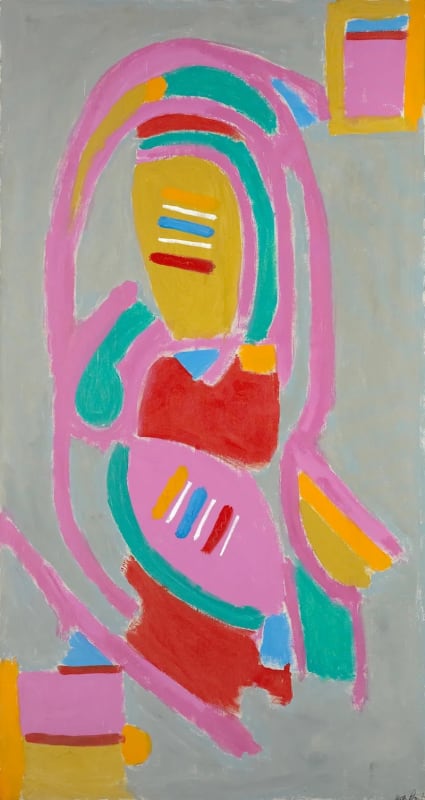What to write, in this jewel-size space, of Betty Parsons’s riotous, jewel-hued paintings, or of her vibrant driftwood assemblages? Of her tender and modest marker drawings, her sketchbooks with playful self-portraits and hasty notes to self, which belie the enormity of her life?
Parsons is best known for her pioneering New York gallery, which launched the careers of many postwar American heavyweights: Barnett Newman, Mark Rothko, Clyfford Still, Jackson Pollock, Helen Frankenthaler, Agnes Martin, and Ad Reinhardt, among others. From early in life, however, she was also on the other side of the art business: As a young woman, she studied sculpture in Paris, alongside Alberto Giacometti and Constantin Brancusi. Yet her place within these legacies as an artist is frequently eclipsed by her success as a gallerist, and by the names of the iconic (frequently male) artists she represented. But this year, London has been kind to overshadowed female modernists, with renewed interest in Lee Krasner, Lois Dodd, and others—they are a flavor, let’s say, and a welcome one.
“The Queen of the Circus,” Parsons’s first exhibition in London since 1980, attests to her artistic virtuosity across media and her interest in an abstraction that draws on a variety of sources—from nature and the cosmos to indigenous culture and Eastern spiritual practices. The show’s eponymous painting, from 1973, is a totemic labyrinth of thinly applied bands of fuchsia, red, turquoise, and taupe, with triangles of blue and dashes of white and orange. In Radiant Reach, 1978, a heraldic geometry of bright lines is suspended in matte gray; and Fish-Owl, 1980, sees its titular hybrid sparely abstracted, a set of hovering emerald eyes against a wash of black. These works are atmospheric, unassuming, and playful pleasures.
In the mid-1960s, Reinhardt wrote to Parsons of preserving her record as both painter and gallerist: “You can’t continue to let Barr or Greenberg . . . or whomever, or Alloway, to ‘palm off’ their ‘History.’ You still have to ‘make’ the history of the past, by continuing to make the history of the present.” Indeed. This exhibition is an excellent reminder.
...
Read review at artforum.com.

